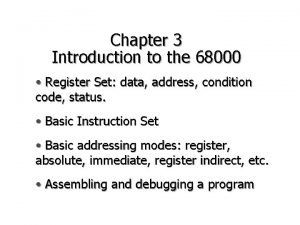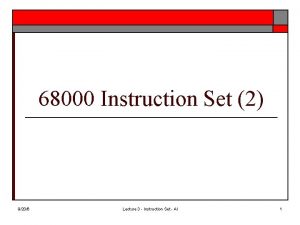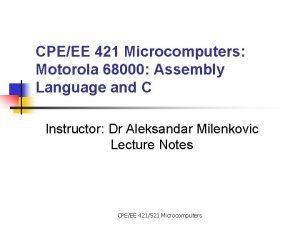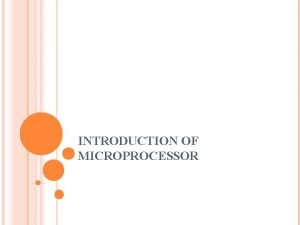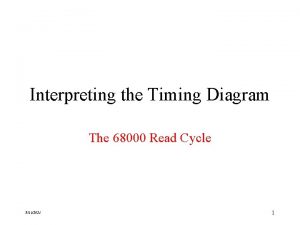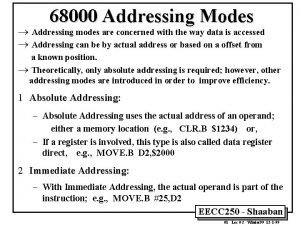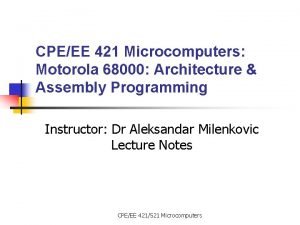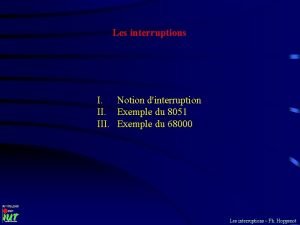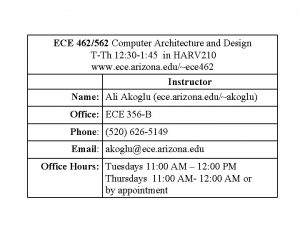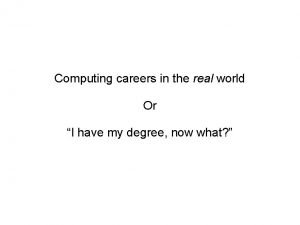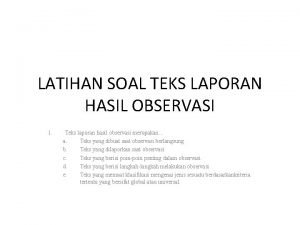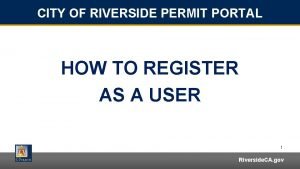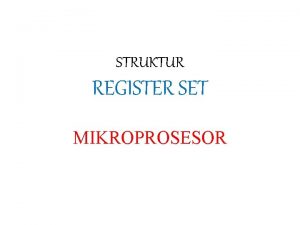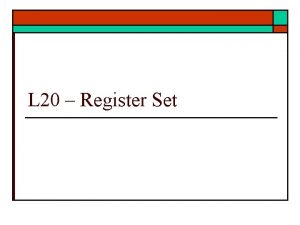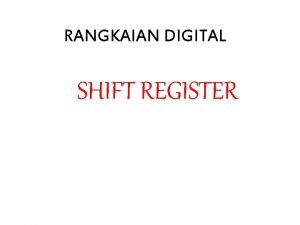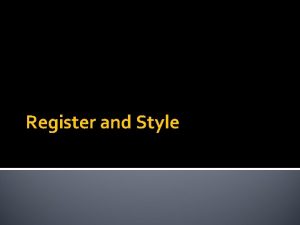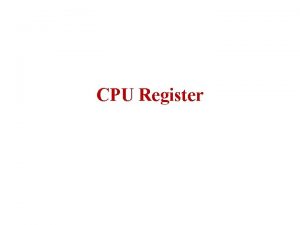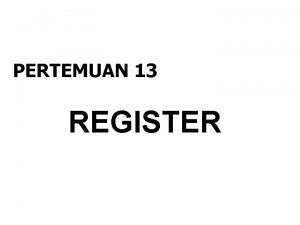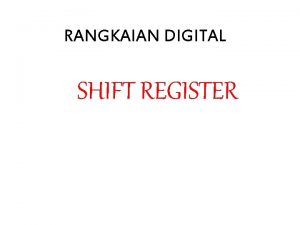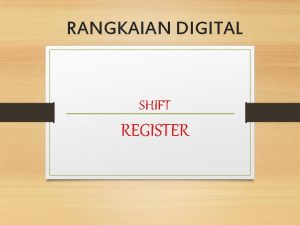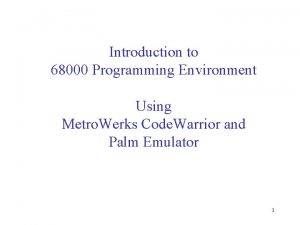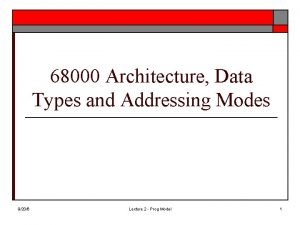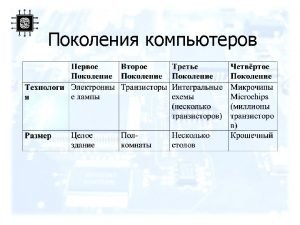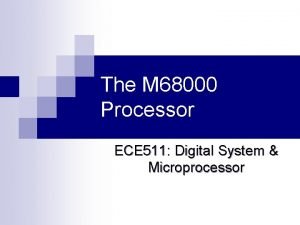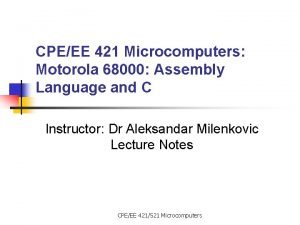Chapter 3 Introduction to the 68000 Register Set








![Conditional Branches (con. ) BNE Branch on [CCR(Z)]=0 BEQ Branch on [CCR(Z)]=1 BCC Branch Conditional Branches (con. ) BNE Branch on [CCR(Z)]=0 BEQ Branch on [CCR(Z)]=1 BCC Branch](https://slidetodoc.com/presentation_image_h/19419cfd929f4cbbfac238c38f74a148/image-9.jpg)











![Arithmetic Operation (con. ) Subtraction: SUB src, dest ; [dest] - [src] • SUB. Arithmetic Operation (con. ) Subtraction: SUB src, dest ; [dest] - [src] • SUB.](https://slidetodoc.com/presentation_image_h/19419cfd929f4cbbfac238c38f74a148/image-21.jpg)





![Logical Operation • AND, OR, EOR, NOT • If [D 0] = 11110000 AND. Logical Operation • AND, OR, EOR, NOT • If [D 0] = 11110000 AND.](https://slidetodoc.com/presentation_image_h/19419cfd929f4cbbfac238c38f74a148/image-27.jpg)



![Immediate Addressing • MOVE. B #25, D 2 ; [D 2] 25 • Immediate Immediate Addressing • MOVE. B #25, D 2 ; [D 2] 25 • Immediate](https://slidetodoc.com/presentation_image_h/19419cfd929f4cbbfac238c38f74a148/image-31.jpg)







- Slides: 38

Chapter 3 Introduction to the 68000 • Register Set: data, address, condition code, status. • Basic Instruction Set • Basic addressing modes: register, absolute, immediate, register indirect, etc. • Assembling and debugging a program

Register Set • 8 general-purpose data registers. Word operation on D -D , byte operation on D -D 00 D 31 15 00 D 16 D 08 07 D 00 D 6 D 7 • PC points at the next instruction to be executed. 31 00 PC

Address Register: A 0 -A 7 • 8 address registers of 32 bits. • Information in an address register represents a location in memory. • Special one: A 7 is used as stack pointer. A 31 A 16 Memory A 00 A 1 A 7 1004 1005 1006 1007 4 A 57 0 E 07 A 0 1005 [M(A 0)] = [M(1005)] = 57

Condition Code Register 7 N Z V e. Xtend Negative Zero o. Verflow Carry X 0 C • The CCR is updated to reflect the result of the operation. • Z=1 if the result is 0 C=1 if there is carry-out from MSB V=1 if there is overflow N=1 if the result is negative

Instruction Set • The 68000 has a large instruction set. – – • e. g. Move data Modify or operate the data Change execution sequence Determine the operation mode of CPU MOVE. B D 3, 1234 MOVE. B #25, D 2 • Classification of instruction set architecture – CISC (Complex instruction set computer): large instruction set, powerful, but difficult to optimize code – RISC (Reduced instruction set computer): smaller instruction set, easy to optimize code, but longer program

Data Movement • Register-to-register, register-to-memory, memory-to-register, memory-to-memory, constant-to-memory/register. • 8 -bit, 16 -bit, 32 -bit correspond to MOVE. B, MOVE. W, MOVE. L • Legal: • Illegal: Assembler Form RTL MOVE. B D 1, D 2 [D 2] [D 1] MOVE. B [M(1234)] [D 3] [M(2000)] [M(1234)] 12 D 3, 1234, 2000 #12, 1234 MOVE. B D 3, #12 12 [D 3] ? ? ?

Unconditional Branch • BRA: Branch BRA address ; GOTO address Example: NEXT BRA NEXT MOVE. B D 1, D 2 MOVE. B #1, D 4 Which instruction will be executed after BRA NEXT is executed?

Conditional Branch • BEQ, BNE, BCC, BCS, BVS Example: BCC Check_5 MOVE. B D 1, D 2 IF c=0 THEN branch to Check_5 … Check_5 MOVE. B #1, D 4 BCC C=0 Check_5 MOVE. B #1, D 4 Check_5 C=1 MOVE. B D 1, D 2
![Conditional Branches con BNE Branch on CCRZ0 BEQ Branch on CCRZ1 BCC Branch Conditional Branches (con. ) BNE Branch on [CCR(Z)]=0 BEQ Branch on [CCR(Z)]=1 BCC Branch](https://slidetodoc.com/presentation_image_h/19419cfd929f4cbbfac238c38f74a148/image-9.jpg)
Conditional Branches (con. ) BNE Branch on [CCR(Z)]=0 BEQ Branch on [CCR(Z)]=1 BCC Branch on [CCR(C)]=0 BCS Branch on [CCR(C)]=1 BVC Branch on [CCR(V)]=0 BVS Branch on [CCR(V)]=1 • The complete set of 68000 conditional branch instructions is given in Table 5. 2 on page 208. (e. g. , BLT, BLE, BGT, BGE, etc. )

CMP and TST • Useful for changing program flow • CMP: Compare – Syntax: CMP src, Dn – Operation: [Dn] - [src] – Result of - is not saved • TST: Test an operand – Syntax: TST dest – Compare [dest] to 0, no result saved • TST D 1 is the same as CMP __, D 1

Change Program Flow IF 1 Set Flag Test Opposite Condition and BR to ENDIF if TRUE THEN 1 IF-Part ENDIF 1. . . IF X 1 = 0 X 1 : = Y 1 IF 1 THEN 1 ENDIF 1 THEN MOVE. B X 1, D 0 (or “TST. B X 1”) BNE ENDIF 1 MOVE. B Y 2, X 1 … other code

Change Program Flow (con. ) IF X 1 = 0 Wrong IF 1 MOVE. B X 1, D 0 BEQ THEN 1 ELSE 1 MOVE. B Y 2, X 1 THEN 1 MOVE. B Y 1, X 1 ENDIF 1 … THEN ELSE Right IF 1 X 1 : = Y 2 MOVE. B X 1, D 0 BEQ THEN 1 ELSE 1 MOVE. B Y 2, X 1 BRA ENDIF 1 THEN 1 MOVE. B Y 1, X 1 ENDIF 1. . .

Change Program Flow (con. ) IF X 1 = 0 THEN ELSE MOVE. B X 1, D 0 BNE ELSE 1 THEN 1 MOVE. B Y 1, X 1 BRA ENDIF 1 ELSE 1 MOVE. B Y 2, X 1 ENDIF 1. . . X 1 : = Y 1 X 1 : = Y 2 IF 1 must have this branch

Change Program Flow (con. ) WHILE (K > 0) DO S WHILE ENDWH TST. B K BLE ENDWH S BRA WHILE. . . test opposite condition loop body

Change Program Flow (con. ) FOR I = N 1 TO N 2 DO S NEXT ENDFOR. . . MOVE. B CMP. B BGT S ADD. B BRA N 1, D 0: loop counter N 2, D 0 ENDFOR loop body #1, D 0 NEXT

• 1 assembly language instruction = 1 machine language instruction • 1 high-level language instruction 1 machine language instructions

Subroutine … BSR ADD 12 … … ADD 12 ADD. B D 1, D 2 SUB. B #12, D 2 RTS

Data Typing • Most high-level language, like Pascal, Java, Ada, are said to be strongly typed. • Assembly language is not strongly typed. • How about C/C++? – Example: A character can be multiplied by an integer. • JAVA?

Data Typing (con. ) A B C D ORG DC. B DC. W DS. B DS. L $1000 $12 $3456 1 1 A B C D 1000 1002 1004 1006 MOVE. B ADD. B A, D 0 B, D 0 [D 0] $12 + $34 MOVE. B ADD. W A, D 0 B, D 0 [D 0] $12 + $3456 MOVE. W ADD. W A, D 0 B, D 0 [D 0] $1200 + $3456 MOVE. L ADD. L A, D 0 B, D 0 [D 0] ? Memory Map 12 00 34 56 00 00 00

Arithmetic Operation • • Data Program ADD, SUB, CLR, NEG, ASL, ASR ADD. B 1234, D 3 ; [D 3] [M(1234)]+[D 3] The CCR is updated accordingly. Example: V 3 = V 1 + V 2 signed integers unsigned integers V 1 V 2 V 3 ORG DC. B DS. B ORG MOVE. B ADD. B MOVE. B BVS. . . $400 12 14 1 $600 V 1, D 0 V 2, D 0, V 3 Error 1 V 2 V 3 ORG DC. B DS. B ORG MOVE. B ADD. B MOVE. B BCS. . . $400 12 14 1 $600 V 1, D 0 V 2, D 0, V 3 Error 1 Are the codes correct? Where is the right place for BVS/BCS?
![Arithmetic Operation con Subtraction SUB src dest dest src SUB Arithmetic Operation (con. ) Subtraction: SUB src, dest ; [dest] - [src] • SUB.](https://slidetodoc.com/presentation_image_h/19419cfd929f4cbbfac238c38f74a148/image-21.jpg)
Arithmetic Operation (con. ) Subtraction: SUB src, dest ; [dest] - [src] • SUB. B D 2, D 0 ; [D 0(0: 7)] - [D 2(0: 7)] SUB. W D 2, D 0 ; [D 0(0: 15)] - [D 2(0: 15)] SUB. L D 2, D 0 ; [D 0] - [D 2] Clear • CLR. B D 0 ; [D 0(0: 7)] 0 Negation: negative value, i. e, , 2’s complement • NEG. B D 4 ; 2’s complement of D 4 If [D 4] = 01101100, after [D 4] = 10010100

ASL (Arithmetic Shift Left) C Operand 0 • Format: – ASL #n, dest or ASL Di, dest shifts bits in dest LEFT by n or [Di] places, respectively • The bit shifted out is shifted in C-bit of CCR. • Example: ASL. B #3, D 0 [D 0] = 0 1 1 1 0 0 [C]=0 10111000 [C]=1 01110000 [C]=0 11100000

ASL (Arithmetic Shift Left) • Why is ASL useful? ASL is the fastest way to perform “multiply by 2’s power” • ASL dest = ASL #1, dest • What does ASL #n, dest do? [dest] x 2 n How to multiply D 0 by 2 ? [D 0] = 00000110 610 After ASL. B #1, D 0 Can ASR cause overflow? [D 0] = 00001100 1210

ASR (Arithmetic Shift Right) MSB Operand C • Same as ASL, but – bits shifted to RIGHT – MSB is duplicated back into MSB (Why? ) • ASR. B #1, D 0 is equivalent to dividing D 0 by 2 Example: [D 0] = -22 = 11101010 After “ASR. B #1, D 0” [D 0] = 11110101 = -11 [CCR(c)] = 0 How to divide D 1 by 32 ? Can ASR cause overflow?

Effect of Arithmetic Operations on CCR • Addition: 1, if carry out from MSB C= 0, otherwise 1, if operands are of same sign and V= their sum is of the opposite sign 0, otherwise ____ V= an-1 bn-1 sn-1 + an-1 bn-1 sn-1 where an-1, bn-1, sn-1 are the MSBs of source destination and result, respectively

Effect of Arithmetic Operations on CCR • Subtraction: 1, if NO carry out from MSB C= 0, otherwise 1, if operands are of opposite sign and V = the result is of same sign as the source 0, otherwise ______ V= (an-1 bn-1) (dn-1 an-1) where an-1, bn-1, dn-1 are the MSBs of source destination and result, respectively
![Logical Operation AND OR EOR NOT If D 0 11110000 AND Logical Operation • AND, OR, EOR, NOT • If [D 0] = 11110000 AND.](https://slidetodoc.com/presentation_image_h/19419cfd929f4cbbfac238c38f74a148/image-27.jpg)
Logical Operation • AND, OR, EOR, NOT • If [D 0] = 11110000 AND. B #%10100110, D 0 OR. B #%10100110, D 0 EOR. B #%10100110, D 0 ; [D 0]=10100000 ; [D 0]=11110110 ; [D 0]=01010110

Use Registers • Accesses to data registers are faster than accesses to memory. • Shorter instruction, 3 bits to indicate either one of 8 general-purpose registers. • Use comments to indicate how registers are used in program. * Get. Char: Input an ASCII-coded character into D 0 * Input Parameters: None * Output parameters: ASCII character in D 0, Error code in D 6 * Registers modified: D 0, D 1, D 6 Get. Char MOVE. B ACIAC, D 1 BTST. B #RDRF, D 1 BEQ Get. Char MOVE. B ACIAC, D 0 AND. B #%01111100, D 1 MOVE. B D 1, D 6 RTS

Addressing Modes • Concerned with the way in which data is accessed (where operand can be found) • Data register direct, absolute, immediate, and address register indirect. • Looking for a house in a familiar neighborhood, “The house next to Tim’s” (relative location) is enough. • Looking for a house in a new environment, “ 61 William Street” (actual address) is necessary, even with a city name.

Absolute Addressing • Use the actual or absolute address of the operand, e. g. CLR. B $234 • MOVE. B D 2, $2000 The source is data register direct, a type of absolute addressing mode. $2000 is memory location 2000 • Symbols can also be used Example: MOVE. B Input, D 0 SUB. B Time, D 0
![Immediate Addressing MOVE B 25 D 2 D 2 25 Immediate Immediate Addressing • MOVE. B #25, D 2 ; [D 2] 25 • Immediate](https://slidetodoc.com/presentation_image_h/19419cfd929f4cbbfac238c38f74a148/image-31.jpg)
Immediate Addressing • MOVE. B #25, D 2 ; [D 2] 25 • Immediate addressing is faster than the absolute addressing. • Data 25 is part of the instruction stored in IR. Absolute Addressing: Immediate Addressing: Hours DC. B 25 ADD. B Hours, D 2 Hours EQU 25 ADD. B #Hours, D 2 What about “ADD. B Hours, D 2

MOVE. B P, D 0 IF 7<P<25 THEN X : = 6 if ((7<P) && (P<25)) X = 6; Out. Of. Range CMP. B #7, D 0 BLE Out. Of. Range CMP. B #25, D 0 BGE Out. Of. Range MOVE. B #6, X … CLR. B D 1 X : = 0 FOR I : = 1 TO 10 X=X+I X = 0; for (I = 1; I <= 10; I++) X = X + I; D 1: X MOVE. B #1, D 0 NEXT D 0: I ADD. B D 0, D 1 ADD. B #1, D 0 CMP. B #10, D 0 BLE NEXT MOVE. B D 1, X

Address Register Indirect • The address of an operand is found in an address register, A 0 to A 7 • Pointer or reference • MOVEA: copy an address to address reg • MOVEA. L #$1000, A 0 CLR. B (A 0) same effect as CLR. B $1000 0 FFF 1000 1001 1002 1003 00 1000 A 0

Indirect Addressing • Two accesses: 1) to the address register A 0 to find the actual address of operand, 1000. 2) to the memory location 1000 to get the operand. • Why is address register indirect addressing useful?

Example: Add 100 numbers together, the data starts at memory location 200016 MOVE. B ADD. B : ADD. B $2000, D 0 $2001, D 0 $2002, D 0 $2003, D 0 $2063, D 0 CLR. B MOVEA. L NEXT ADD. B ADDA. L CMPA. L BNE D 0 #$2000, A 0 (A 0), D 0 #1, A 0 #$2064, A 0 NEXT

Different Addressing 1 * Program to test the different addressing modes. 2 * [D 2] [M(0)] + 26. By Mingrui Zhang 3 4 00001000 ORG $1000 5 00001000 1 A ABSOL: DC. B 26 6 0000001 A IMMED: EQU 26 7 8 00002000 ORG $2000 9 00002000 207 C 00001000 MOVEA. L #$1000, A 0 10 00002006 24380000 MOVE. L $0, D 2 11 0000200 A D 410 ADD. B (A 0), D 2 12 13 0000200 C 24380000 MOVE. L $0, D 2 14 00002010 D 4381000 ADD. B ABSOL, D 2 15 16 00002014 24380000 MOVE. L $0, D 2 17 00002018 0602001 A ADD. B #IMMED, D 2 18 19 0000201 C 4 E 722700 STOP #$2700 20 00002000 END $2000

The Teesside MC 68000 Crossassembler and Simulator TOOLS FILES Desing the program Edit source file Cross-assemble the program Run the program text editor Test. X 68 K E 68 K Test. BIN (and Test. LIS)

Debugging Commands • HELP: Provide information about commands • MD (. ): Displays the contents of memory e. g. MD 400 -DI ; disassemble the contents of memory. • MM: Memory modification e. g. MM 400 -B MM 2100 -W MM 400 -B -DEC MM 2100 -W -DEC • DF: Displays the contents of all registers • . PC: set PC e. g. . PC 400 • GO: Execute program, (ESC to escape) • TR: Executes a single instruction at a time • BR 10000: Places a marker at location 10000 • QU: Quit
 Motorola 68000 isa
Motorola 68000 isa Motorola 68000 instruction set
Motorola 68000 instruction set 68000 assembly
68000 assembly Total set awareness set consideration set
Total set awareness set consideration set Training set validation set test set
Training set validation set test set Block diagram of 8085 microprocessor
Block diagram of 8085 microprocessor Memory read cycle
Memory read cycle 68000 addressing modes
68000 addressing modes Xnzvc assembly
Xnzvc assembly 68000
68000 Ece 369
Ece 369 68000
68000 Processeur 68000
Processeur 68000 Berikut ini struktur teks laporan hasil observasi kecuali
Berikut ini struktur teks laporan hasil observasi kecuali Riverside permit portal
Riverside permit portal Apa itu register set
Apa itu register set Bounded set vs centered set
Bounded set vs centered set Crisp set vs fuzzy set
Crisp set vs fuzzy set Crisp set vs fuzzy set
Crisp set vs fuzzy set Crisp set vs fuzzy set
Crisp set vs fuzzy set What is the overlap of data set 1 and data set 2?
What is the overlap of data set 1 and data set 2? Correspondence function examples
Correspondence function examples Hát kết hợp bộ gõ cơ thể
Hát kết hợp bộ gõ cơ thể Slidetodoc
Slidetodoc Bổ thể
Bổ thể Tỉ lệ cơ thể trẻ em
Tỉ lệ cơ thể trẻ em Chó sói
Chó sói Tư thế worms-breton
Tư thế worms-breton Chúa yêu trần thế alleluia
Chúa yêu trần thế alleluia Các môn thể thao bắt đầu bằng tiếng đua
Các môn thể thao bắt đầu bằng tiếng đua Thế nào là hệ số cao nhất
Thế nào là hệ số cao nhất Các châu lục và đại dương trên thế giới
Các châu lục và đại dương trên thế giới Công thức tiính động năng
Công thức tiính động năng Trời xanh đây là của chúng ta thể thơ
Trời xanh đây là của chúng ta thể thơ Cách giải mật thư tọa độ
Cách giải mật thư tọa độ Làm thế nào để 102-1=99
Làm thế nào để 102-1=99 độ dài liên kết
độ dài liên kết Các châu lục và đại dương trên thế giới
Các châu lục và đại dương trên thế giới Thơ thất ngôn tứ tuyệt đường luật
Thơ thất ngôn tứ tuyệt đường luật
